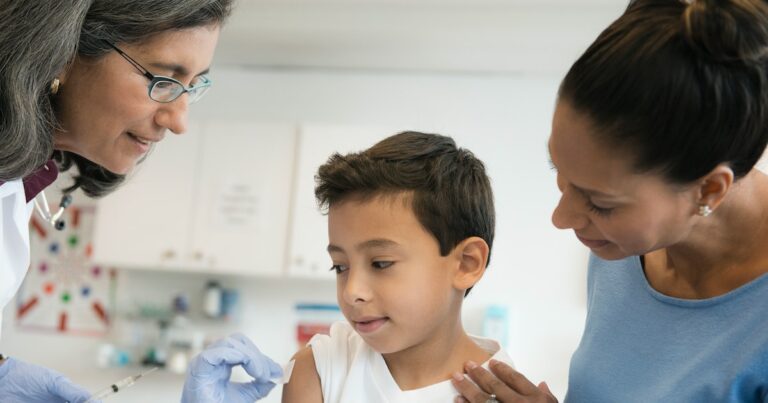
[ad_1]
The vaccine rates in kindergarten-aged children has dropped for the second year in a row, according to a new report from the Center for Disease Control (CDC).
The CDC collected data from state and local immunization programs on vaccination coverage and exemptions to vaccinations among children in kindergarten in 49 states (Montana did not report school vaccination data) and the District of Columbia.
The organization found that nationwide vaccination coverage has dropped by 0.4%-0.9% for all vaccines, including vaccines required for school, like two doses of the measles, mumps, and rubella vaccine (MMR), the diphtheria, tetanus, and acellular pertussis vaccine (DTaP), and the poliovirus vaccine. Like regular dentist trips and other self-care routines, the pandemic made it difficult for some families to make their regular pediatrician visits and keep on vaccine schedules.
During the 2020-2021 school year, roughly 94% of kindergarten-aged children had vaccine coverage. This dropped to 93% during the 2021-2022 school year, and while a 1% difference that may not seem significant, it adds up. According to the CDC, 3.9% of children who did not have a vaccine exemption were not up to date with their MMR shots — that shakes out to roughly 250,000 kids.
The percentage of kindergarten-aged children with vaccine exemptions, on the other hand, increased for the second year in a row. From 2020-2021, the CDC said there was a 2.2% exemption rate. During the 2021-2022 school year, that increased to 2.6%.
“Vaccination coverage among kindergarten students remains below prepandemic levels; pockets of undervaccinated children within larger areas of high vaccination coverage can lead to outbreaks… Rigorously enforced school vaccination requirements, school-based vaccination clinics, reminder and recall systems, and follow-up with undervaccinated students by school nurses are effective strategies to improve vaccination coverage,” the CDC wrote. “As schools return to in-person learning, high vaccination coverage is critical to continue protecting children and communities from vaccine-preventable diseases.”
[ad_2]